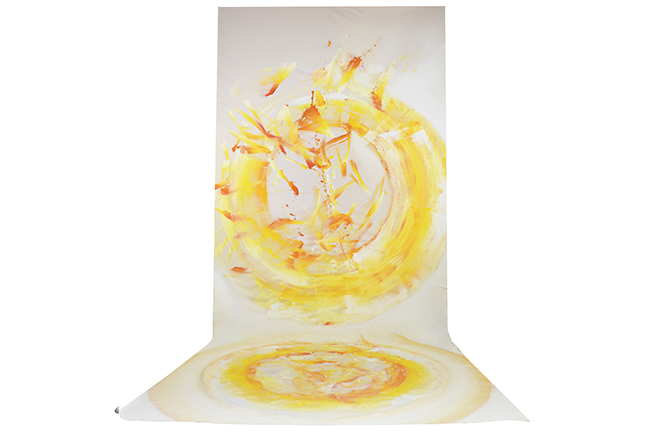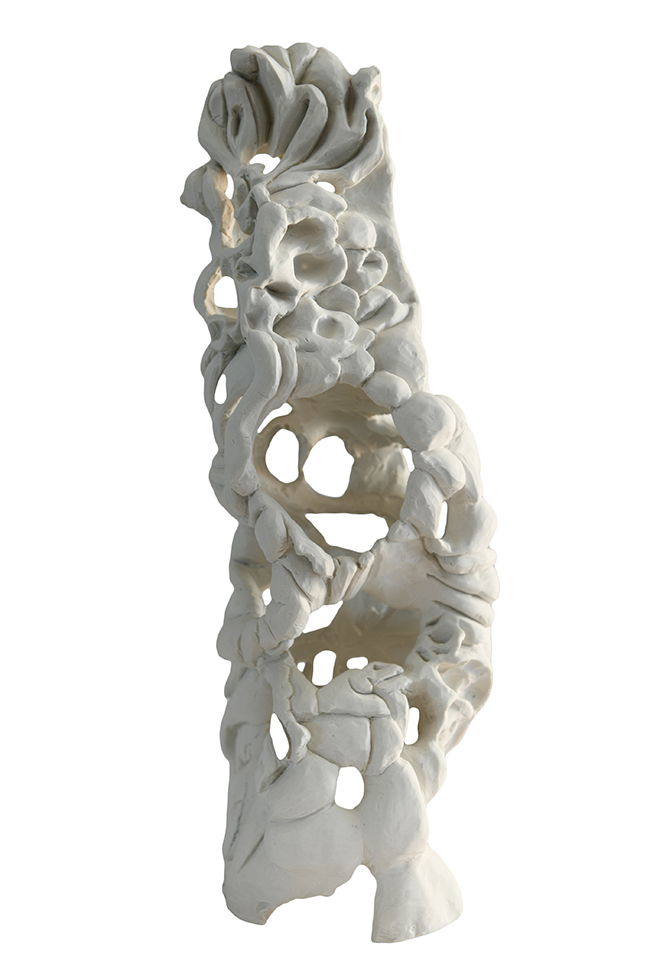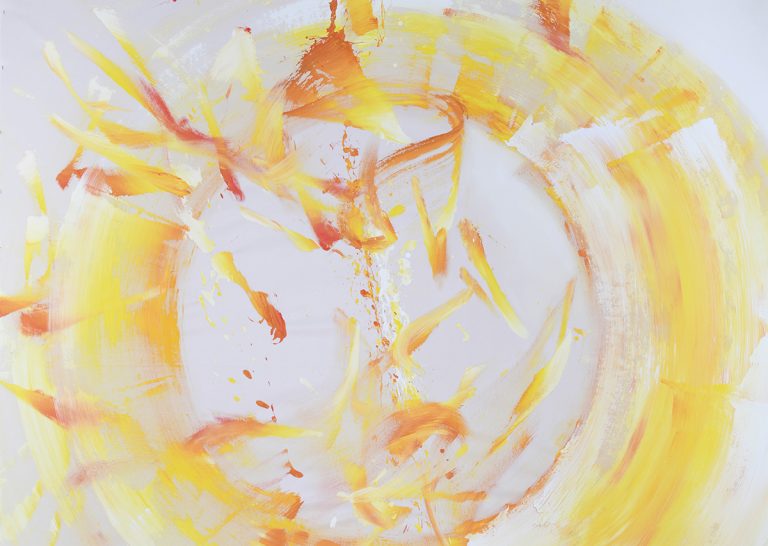Carolin Rechberg moves through art like a traveler collecting textures, sounds, and sensations. Born in Starnberg, Germany, she doesn’t stay still—not in her practice, not in her ideas. She moves between ceramics, sculpture, painting, performance, poetry, photography, textiles, sound art, and installation as naturally as breathing. But this isn’t about range for its own sake—it’s about presence. For Rechberg, the act of creating is as essential as the final form. The movement of her hands, the rhythm of her breath, and the dialogue between her and her materials are the real essence of her art. Her work is an invitation to step into that rhythm—to see not just with the eyes but to feel with the body. It doesn’t demand interpretation. It asks for attention. It invites the viewer to meet it halfway—to be in it, not outside of it.

Cradle the Essence of Your Being / A Gateway to Conscience / Ascend to Your Potential of Presence
Painting — Gesso and Tempera on Raw Canvas (H 308 × W 211 × D 179 cm, 2025)
Standing before Cradle the Essence of Your Being feels less like viewing a painting and more like entering a field of energy. The work unfurls vertically and extends forward, pulling the viewer into its orbit. At first glance, the circular sweeps of yellow and orange radiate warmth, a kind of inner light caught in motion. But Rechberg’s hand is not trying to capture a fixed image—it’s channeling movement itself. The spirals seem to breathe, oscillating between birth and becoming. There’s an almost meditative pulse in the transitions of tone, from soft butter-yellow to deep amber, like sunlight refracted through emotion.
The piece challenges the conventional boundary between painting and installation. It isn’t contained within the frame; it spills out, collapses into the space around it. The raw canvas flows onto the floor, extending the gesture beyond visual form and into lived space. This physical continuity mirrors the work’s conceptual one—it’s a passage between realms: inner and outer, stillness and action, the seen and the sensed.
Rechberg’s use of gesso and tempera is deliberate, grounding the work in ancient materials that carry a tactile honesty. There’s no gloss or pretense. Every brushstroke feels immediate, born of a physical moment. She doesn’t conceal process—she reveals it. The gestures retain their imperfections, their beginnings and endings visible. The work becomes a meditation on awareness itself: how we move, how we notice, how we occupy presence.
There’s something ritualistic in its scale and execution. It calls to mind the gestures of Zen calligraphy, where a single brushstroke becomes an act of mindfulness. The energy spirals outward yet remains centered, creating a tension between expansion and grounding. It’s as though the painting is both a threshold and a mirror—inviting viewers to contemplate their own “potential of presence,” to find where their consciousness meets the material world.

Contemplation Stone XXI
Sculpture — Porcelain (H 43 × W 15 × D 14 cm, 2021)
If Cradle the Essence of Your Being embodies motion, Contemplation Stone XXI embodies stillness. Carved in porcelain, the work stands as a meditation on space, texture, and silence. Its surface undulates with soft organic forms—hollowed, folded, and porous. The structure seems simultaneously eroded and grown, as if formed by the slow persistence of wind and time. Each curve and void carries a quiet presence, echoing the natural formation of stones shaped by water.
Rechberg’s sculpture feels almost like an artifact of contemplation—a physical embodiment of pause. The openings invite light to move through, shifting the perception of solidity. Despite being made of porcelain, a material often associated with fragility, it emanates a sense of quiet strength. There’s no single vantage point; it must be walked around, inhabited. Each perspective reveals new voids and passages, suggesting that contemplation itself is not static but an act of continuous turning and returning.
The title, Contemplation Stone, speaks to the essence of her approach—where object becomes experience. It’s less about what the sculpture represents and more about how it exists. The piece becomes an anchor for attention, a reminder to slow down and listen to the silent dialogue between form and emptiness.
Together, these two works—one expansive and luminous, the other intimate and grounded—form a kind of conversation. One rises, the other rests. One moves outward in color and gesture, the other inward through quiet reflection. In both, Rechberg invites us to engage with art as an act of being—to cradle the essence of our own presence, to notice the pulse of awareness that connects us to material, to form, to space, and to each other.

